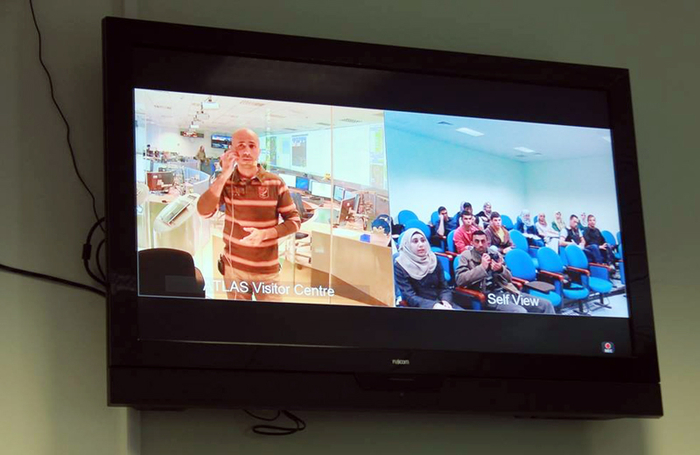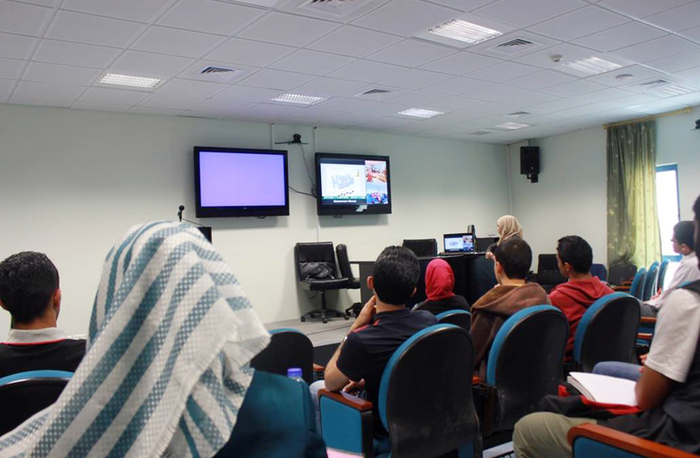SAPA at An-Najah Holds a Video Conference with CERN on ATLAS Experiment
On Tuesday, May 5th, 2015, the Student Association for Physics and Astronomy (SAPA) at An-Najah held a video conference with the European Organization for Nuclear Research (CERN) on ATLAS experiment at An-Najah.

The conference aimed at discussing the importance of the ATLAS experiment as it sheds light on new theories of particle physics beyond the Standard Model. It also aimed at keeping the Palestinian physics students in touch with experiments that can expand their knowledge in the field.
Dr. Mohammed Hroub, Researcher at CERN and Contributing Scientist at the ATLAS experiment, talked about atomic and particle physics. He also talked about the Large Hadron Collider (LHC) used in the experiment.
The conference was concluded by a discussion on atomic physics and the ATLAS experiment.

Notes:
- The European Organization for Nuclear Research (French: Organisation européenne pour la recherche nucléaire), known as CERN, is a European research organization that operates the largest particle physics laboratory in the world. Established in 1954, the organization is based in a northwest suburb of Geneva on the Franco–Swiss border and has 21 European member states.
- ATLAS is one of seven particle detector experiments constructed at the LHC, a particle accelerator at CERN (the European Organization for Nuclear Research) in Switzerland. The experiment is designed to take advantage of the unprecedented energy available at the LHC and observe a phenomenon that involves highly massive particles which were not observable earlier using lower-energy accelerators.
- The LHC is the world’s largest and most powerful particle accelerator. It consists of a 27-kilometre ring of superconducting magnets with a number of accelerating structures to boost the energy of the particles along the way.
- Atomic physics is the field of physics that studies atoms as an isolated system of electrons and an atomic nucleus. It is primarily concerned with the arrangement of electrons around the nucleus and the processes by which these arrangements change.
- The conference included introducing An-Najah's students to the control chamber and the way ATLAS operates.



